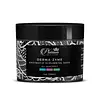What's inside
What's inside
 Key Ingredients
Key Ingredients

 Benefits
Benefits

 Concerns
Concerns

 Ingredients Side-by-side
Ingredients Side-by-side

Water
Skin ConditioningHamamelis Virginiana Water
AstringentKaolin
AbrasiveDiatomaceous Earth
AbrasiveGlycerin
HumectantCaprylic/Capric Triglyceride
MaskingGlycine Soja Protein
EmulsifyingSqualane
EmollientKojic Acid
AntioxidantTetrahexyldecyl Ascorbate
AntioxidantBromelain
Skin ConditioningGallic Acid
AntioxidantSalicylic Acid
MaskingMalic Acid
BufferingTartaric Acid
BufferingAminobutyric Acid
Lactic Acid
BufferingPhyllanthus Emblica Fruit Extract
HumectantPassiflora Incarnata Flower Extract
Skin ConditioningAllantoin
Skin ConditioningMentha Piperita Oil
MaskingMenthol
MaskingBisabolol
MaskingNelumbo Nucifera Flower Extract
Skin ConditioningCitrus Reticulata Peel Oil
MaskingCitrus Grandis Peel Oil
MaskingSantalum Album Oil
MaskingTitanium Dioxide
Cosmetic ColorantSpirulina Platensis Extract
Skin ProtectingGlyceryl Caprylate
EmollientGlyceryl Undecylenate
EmollientXanthan Gum
EmulsifyingPotassium Sorbate
PreservativeWater, Hamamelis Virginiana Water, Kaolin, Diatomaceous Earth, Glycerin, Caprylic/Capric Triglyceride, Glycine Soja Protein, Squalane, Kojic Acid, Tetrahexyldecyl Ascorbate, Bromelain, Gallic Acid, Salicylic Acid, Malic Acid, Tartaric Acid, Aminobutyric Acid, Lactic Acid, Phyllanthus Emblica Fruit Extract, Passiflora Incarnata Flower Extract, Allantoin, Mentha Piperita Oil, Menthol, Bisabolol, Nelumbo Nucifera Flower Extract, Citrus Reticulata Peel Oil, Citrus Grandis Peel Oil, Santalum Album Oil, Titanium Dioxide, Spirulina Platensis Extract, Glyceryl Caprylate, Glyceryl Undecylenate, Xanthan Gum, Potassium Sorbate
Aloe Barbadensis Leaf Juice
Skin ConditioningPropylene Glycol
HumectantGlycerin
HumectantCetyl Alcohol
EmollientPerlite
AbsorbentBromelain
Skin ConditioningPapain
Skin ConditioningCarthamus Tinctorius Seed Oil
MaskingHydrogenated Polydecene
EmollientGlycolic Acid
BufferingLactic Acid
BufferingGlyceryl Stearate
EmollientDimethicone
EmollientPEG-100 Stearate
Polyacrylate-13
Hydroxyethylcellulose
Emulsion StabilisingChamomilla Recutita Flower Extract
MaskingTocopherol
AntioxidantPolyisobutene
Polysorbate 80
EmulsifyingPolysorbate 20
EmulsifyingBenzyl Alcohol
PerfumingKaolin
AbrasiveMagnesium Aluminum Silicate
AbsorbentEthylhexylglycerin
Skin ConditioningParfum
MaskingAloe Barbadensis Leaf Juice, Propylene Glycol, Glycerin, Cetyl Alcohol, Perlite, Bromelain, Papain, Carthamus Tinctorius Seed Oil, Hydrogenated Polydecene, Glycolic Acid, Lactic Acid, Glyceryl Stearate, Dimethicone, PEG-100 Stearate, Polyacrylate-13, Hydroxyethylcellulose, Chamomilla Recutita Flower Extract, Tocopherol, Polyisobutene, Polysorbate 80, Polysorbate 20, Benzyl Alcohol, Kaolin, Magnesium Aluminum Silicate, Ethylhexylglycerin, Parfum
 Reviews
Reviews

Ingredients Explained
These ingredients are found in both products.
Ingredients higher up in an ingredient list are typically present in a larger amount.
We don't have a description for Bromelain yet.
Glycerin is already naturally found in your skin. It helps moisturize and protect your skin.
A study from 2016 found glycerin to be more effective as a humectant than AHAs and hyaluronic acid.
As a humectant, it helps the skin stay hydrated by pulling moisture to your skin. The low molecular weight of glycerin allows it to pull moisture into the deeper layers of your skin.
Hydrated skin improves your skin barrier; Your skin barrier helps protect against irritants and bacteria.
Glycerin has also been found to have antimicrobial and antiviral properties. Due to these properties, glycerin is often used in wound and burn treatments.
In cosmetics, glycerin is usually derived from plants such as soybean or palm. However, it can also be sourced from animals, such as tallow or animal fat.
This ingredient is organic, colorless, odorless, and non-toxic.
Glycerin is the name for this ingredient in American English. British English uses Glycerol/Glycerine.
Learn more about GlycerinKaolin is a clay. It is used for oil control and to help minimize pores. Like other clays, kaolin has the ability to absorb excess sebum or oil. This can help clean out pores and mattify the skin.
Some types of kaolin may have exfoliating properties. When water is added to kaolin, it becomes a paste with small abrasive particles.
Most kaolin is a white color, but may be pink/orange/red depending on where it comes from.
The name 'kaolin' comes from a Chinese village named 'Gaoling'. Kaolin clay comes from rocks rich in kaolinite. Kaolinite, the mineral, has a silicate layered structure. Kaolinite is formed from chemical weathering of aluminum siilicate minerals.
Besides skincare, kaolin is commonly used to make glossy paper, in ceramics, toothpaste, and as medicine to soothe stomach issues.
Learn more about KaolinLactic Acid is another well-loved alpha hydroxy acid (AHA). It is gentler than glycolic acid but still highly effective.
Its main role is to exfoliate the surface of the skin by loosening the “glue” that holds dead skin cells together. Shedding those old cells leads to smoother, softer, and more even-toned skin.
Because lactic acid molecules are larger than glycolic acid, they don’t penetrate as deeply. This means they’re less likely to sting or irritate, making it a great choice for beginners or those with sensitive skin.
Like glycolic acid, it can:
Lactic acid also acts as a humectant (like hyaluronic acid). It can draw water into the skin to improve hydration and also plays a role in the skin's natural moisturizing factor (NMF) in the form of sodium lactate.
Studies show it can boost ceramide production to strengthen the skin barrier and even help balance the skin’s microbiome.
To get results, choose products with a pH between 3-4.
Lower strengths (5-12%) focus on surface exfoliation; higher strengths (12% and up) can reach deeper in the dermis (deeper, supportive layer) to improve skin texture and firmness over time.
Though it was originally derived from milk, most modern lactic acid used in skincare is vegan. It is made through non-dairy fermentation to create a bio-identical and stable form suitable for all formulations.
When lactic acid shows up near the end of an ingredient list, it usually means the brand added just a tiny amount to adjust the product’s pH.
Legend has it that Cleopatra used to bathe in sour milk to help reduce wrinkles.
Lactic acid is truly a gentle multitasker: it exfoliates, hydrates, strengthens, and brightens. It's a great ingredient for giving your skin a smooth, glowing, and healthy look without the harshness of stronger acids.
Read more about some other popular AHA's here:
Learn more about Lactic Acid